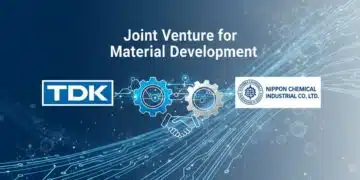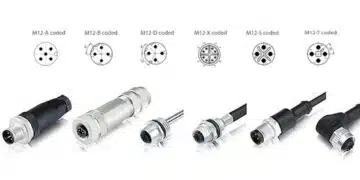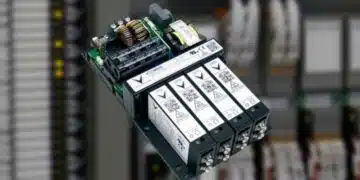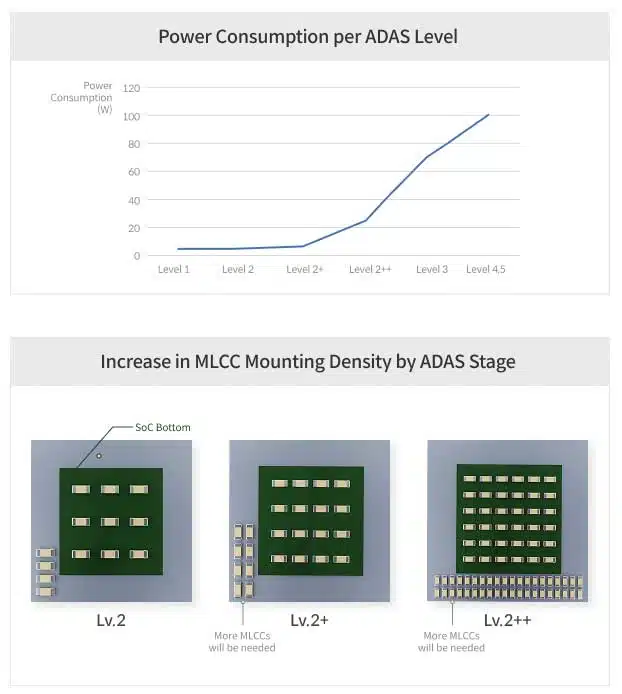Samsung Electro-Mechanics propose compact, high-capacitance, low ESL MLCCs ceramic capacitors for automotive ADAS (Advanced Driver Assistance System) SoCs (System on Chips).
To assist driver’s safety and convenience, ADAS technology continues to evolve with improvement of the performance of ADAS SoCs.
The enhanced performance of SoCs leads to higher power consumption and an increase in switching frequency, which in turn requires high-capacitance and Low ESL MLCCs for stable power delivery to the SoCs.
Samsung Electro-Mechanics provides high-capacitance, Low ESL MLCCs applicable to ADAS SoCs. They are as follows:
| 1 Low Frequency Decoupling | 2 High Frequency Decoupling | |
|---|---|---|
| Needs | High-Capacitance | Low ESL, Low Profile (Ultra-thin) |
| MLCCs | 0201 inch ~1uF 0402 inch ~ 2.2uF 0603/0805 inch ~ 22uF 1206 inch ~ 47uF 1210 inch ~ 220uF *0402 inch ~ 10uF *0805 inch ~ 47uF *1206 inch ~ 100uF *Under Development | 0201 inch – 0.1uF 0402 inch – Reversed Type *0402/0603 inch – 3-Terminal *Under Development |

First Solution: Compact High-Capacitance MLCCs
With the advancement of ADAS technology, the performance of SoCs is anticipated to increase by approximately 10 times, while the power consumption at Level 3 is projected to rise by more than sixfold. To ensure the stable operation of ADAS SoCs, there is an increasing demand for high-capacitance MLCCs and compact-sized MLCCs that can be integrated within limited PCB space.
Samsung Electro-Mechanics is continuously developing and supplying small, high-capacitance MLCCs for automotive electronics to meet the space-saving demands of the high-performance trend in ADAS SoCs, maintaining the same capacitance and rated voltage while reducing size.
| Size(inch/mm) | Rated Voltage | TCC | Capacitance |
|---|---|---|---|
| 0805/2012 | 6.3Vdc | X7T | 22㎌ |
| 1206/3216 | 6.3Vdc | X7T | 47㎌ |


































